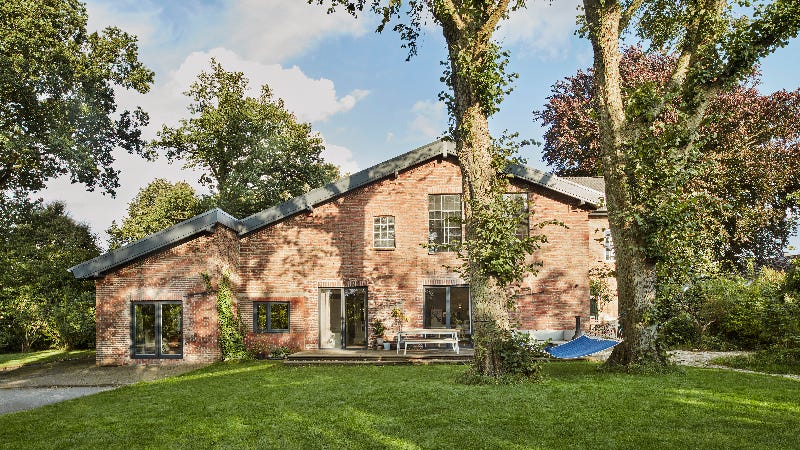What is dwelling insurance?

Key takeaways
- Dwelling insurance policies are designed for buildings that are not owner-occupied, such as investment properties or vacant homes.
- There are three types of dwelling policies — DP-1, DP-2 and DP-3 — each with varying levels of coverage for the building and personal property.
- DP-1 policies are the most affordable but offer the least coverage, while DP-3 policies offer the broadest coverage but are more expensive.
When you read through your home insurance policy, you’ll come across something called Coverage A or dwelling coverage. This is the part of your home insurance policy that financially protects your home’s physical structure. It’s not uncommon for dwelling coverage to be confused with dwelling fire insurance, which is a different type of policy altogether. Home insurance is primarily designed for a place you live in full-time, while dwelling insurance (aka a dwelling fire policy) is mainly for buildings that aren’t owner-occupied.
What is a dwelling policy in insurance?
A dwelling policy is a type of property insurance designed for people who own a building but don’t live in it full-time. If you live in your home year-round, a standard home insurance policy will probably meet most of your coverage needs. However, buildings that are unoccupied for long stretches of time and buildings used as investment properties usually have different coverage needs. That’s where dwelling fire policies come in.
Dwelling fire policies are designed to insure buildings that may not qualify for coverage under a home insurance policy. Property that’s left unattended for long periods of time presents different risks compared to a primary residence, and dwelling fire policies are written to insure against those risks.
Dwelling fire policies and home insurance policies differ in cost and coverage. With dwelling fire policies, theft and liability coverage are not automatically included, but they can be purchased as add-ons. Most home insurance policies come with these coverage types pre-included. Because dwelling fire policies cover less than home policies, premiums are usually cheaper.
What do dwelling policies cover?
Dwelling policies, referred to as DP-1, DP-2 or DP-3, are structured similarly to home insurance policies. Different coverage types work together to cover your property in the event of damage from unexpected events (called “perils” in the insurance industry). Here’s a closer look at the different core coverage types included in a dwelling fire insurance policy.
- Dwelling (Coverage A)
- Replaces or repairs the building’s physical structure, like its walls, floors, foundation and roof, and other attached structures
- Other structures (Coverage B)
- Replaces or repairs detached structures on the property, like a gazebo or shed
- Personal property (Coverage C)
- Coverage for the insured’s personal belongings
- Fair rental value (Coverage D)
- If the property is rented out and a covered loss makes the property uninhabitable, this helps pay for lost rental income
- Additional living expenses (Coverage E)*
- If the property is owner-occupied and a covered loss makes it unsafe to live in, this helps pay for the owner’s hotel, restaurant and other related bills
*Not automatically included in DP-1 policies
Who needs dwelling insurance?
- Vacation homes
- Hunting cabins
- Investment property
- Homes under construction
- Landlords with four or fewer tenants
What is DP-1 insurance?
DP-1 offers the least coverage of the three dwelling insurance policies. Unlike the other types, additional living expenses coverage is not automatically included. When you file a claim, it’s usually paid out on an actual cash value (ACV) basis. This means that depreciation is factored into your claim, so any potential payout will likely be lower. This, and the smaller scope of coverage, usually make DP-1s the most affordable dwelling policy .
What is DP-2 insurance?
DP-2 covers the dwelling, other structures and personal property for different perils listed in the policy. It covers more types of losses than a DP-1 but not as many as the DP-3. Claims filed on a DP-2 policy are paid out on an actual cash value basis, as opposed to replacement cost value (RCV). In terms of cost, the DP-2 is usually more expensive than a DP-1 but cheaper than a DP-3.
What is DP-3 insurance?
Of the three different types of dwelling insurance, DP-3 covers the most. Personal property is covered for losses from perils specifically named in your policy. The dwelling and other structures are covered on an open-peril basis, which means you’re covered unless a peril is specifically excluded per your policy. Like a DP-2, the dwelling and other structures are insured at replacement cost value. Personal property is insured at actual cash value. Because this dwelling policy type offers the broadest coverage, DP-3 premiums usually cost more than DP-1 and DP-2.
DP-1 vs. DP-2 vs. DP-3
| Peril | DP-1 | DP-2 | DP-3* |
|---|---|---|---|
| Fire | ✔ | ✔ | ✔ |
| Lightning | ✔ | ✔ | ✔ |
| Explosion | ✔ | ✔ | ✔ |
| Riot | ✔ | ✔ | ✔ |
| Volcanic eruption | ✔ | ✔ | ✔ |
| Damage from vehicles | ✔ | ✔ | ✔ |
| Damage from aircraft | ✔ | ✔ | ✔ |
| Vandalism | ✔ | ✔ | ✔ |
| Burglary damage | ✔ | ✔ | |
| Weight of ice, snow or sleet | ✔ | ✔ | |
| Falling objects | ✔ | ✔ | |
| Freezing | ✔ | ✔ | |
| Sudden and accidental water damage | ✔ | ✔ | |
| Electric current | ✔ | ✔ | |
| Fireplace smoke | ✔ | ✔ |
*Personal property losses only. Dwelling and other structures covered on an open-peril basis.
What do dwelling fire policies not cover?
Two major things are not covered by dwelling fire policies: theft and liability. If you want these two things covered, you’ll need to purchase policy add-ons, called endorsements. Vandalism is a covered policy peril; however, it may not apply if the building has been vacant for more than 60 consecutive days. In insurance lingo, “vacant” and “unoccupied” mean two different things. An unoccupied building still has furniture in it, while a vacant property has neither furniture nor anyone living in it.
Other dwelling fire policy exclusions are similar to what you’d see on a home insurance policy. These include:
- Floods
- Earthquakes
- War
- Nuclear hazards
- Government seizure
- Neglect
- Intentional losses
Frequently asked questions
You may also like

HO-3 vs HO-5 insurance for homeowners

Mortgage insurance vs. homeowners insurance: What’s the difference?

What does renters insurance cover?

What is dwelling coverage in a home insurance policy?


